When you hear the word “Badlands”, we all think of the famous Badlands in South Dakota. Well, it turns out there are more Badlands than those. We discovered other Badlands when we were at Dinosaur Provincial Park in Alberta, Canada. It turns out North Dakota has Badlands too! Thanks to Janelle’s friend Laura who gave me a head’s up on the Theodore Roosevelt National Park.
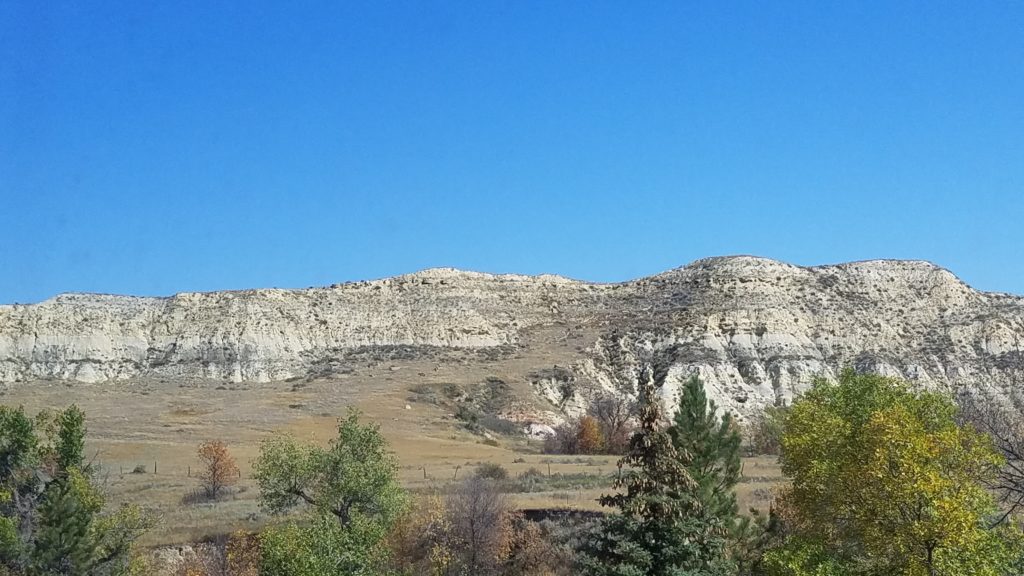
We stayed in the tourist trap town of Medora on the south edge of the National Park. The place was dead quiet in mid-September with most of the shops already closed up (thus no pictures of the town). All that was open was the local bar and gas station. The town must be a mad house in the summer. No thanks. We stayed at a nondescript campground two miles outside of town. There were no frills, but we did have this view out our RV window.
Twenty-four year old Teddy Roosevelt came to this area after both his mother and first wife died on the same day. He came to grieve and shoot bison, but ended up ranching. He later said “I have always said I would not have been President had it not been for my experience in North Dakota.” Our country would certainly have less preserved natural spaces if not for Roosevelt being an avid conservationist when he was president.
The Theodore Roosevelt National Park so aptly named after Teddy Roosevelt is divided into two “units.” The South Unit and the North Unit. The muddy Little Missouri River connects the two.
South Unit
Our time in the South Unit was spent doing a loop drive and some hiking.
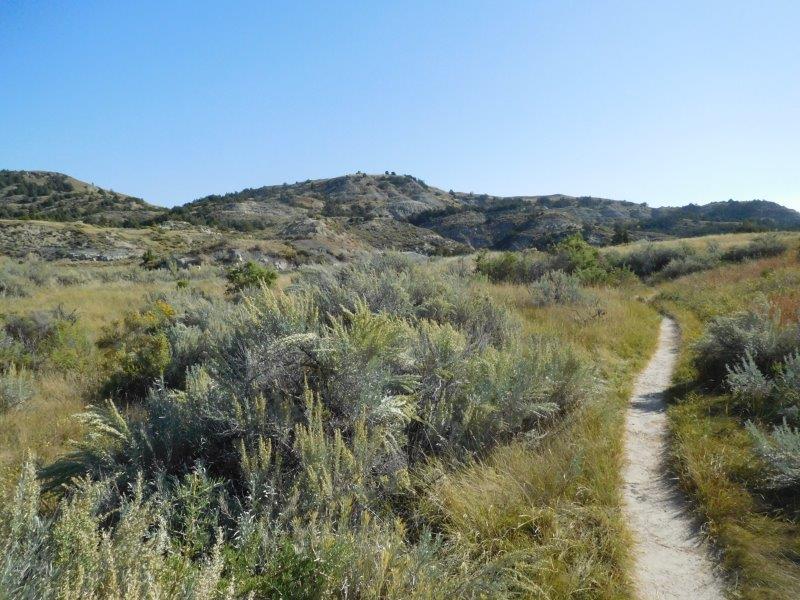
Hiking along the Coal Vein Trail. In 1951, a vein of 12 foot thick vein of coal caught fire from a lightening storm and burned for 26 years. The fire forever changed the landscape, causing the ground above the fire to collapse.
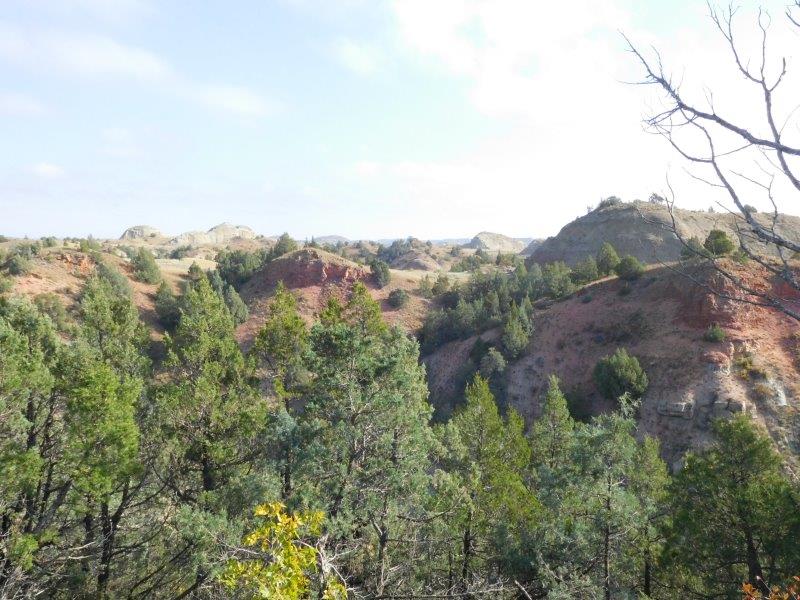
The red bands of rocks are called Clinker. Clinker is formed when a burning coal vein bakes the rocks above it, turning it into a hard red rock.
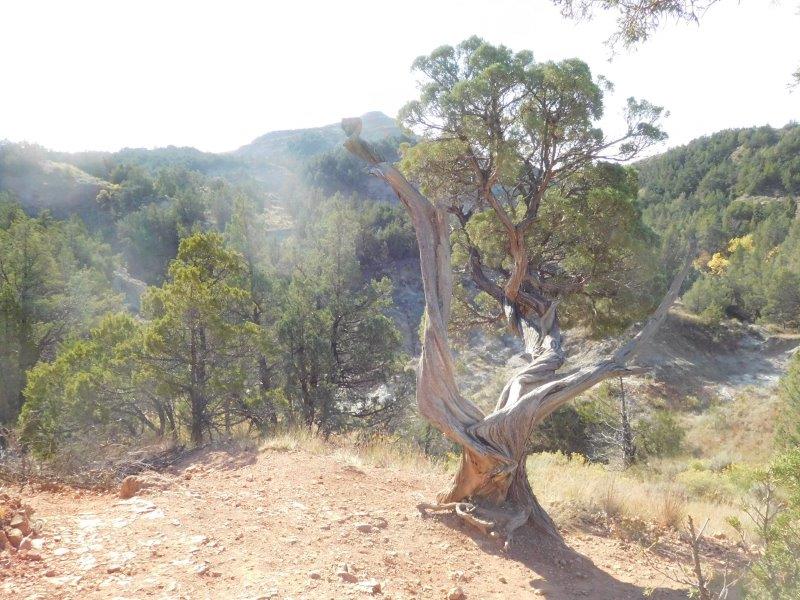
This little twisted tree is similar to the one we saw in Bend, Oregon. The tree twists while growing to allow all sides to gain access to moisture and nutrients.
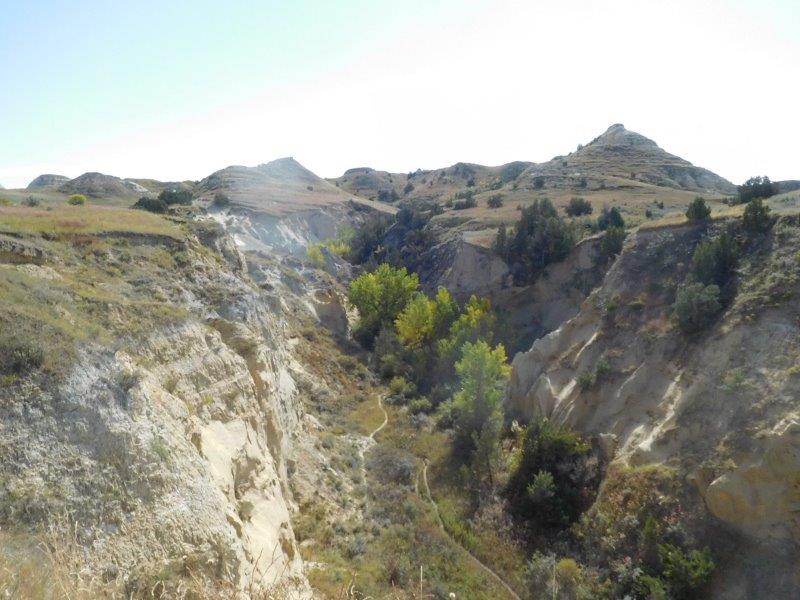
This is the one place in the park where the erosion was due to wind, not water. The right side is wind-worn smooth instead of jagged.
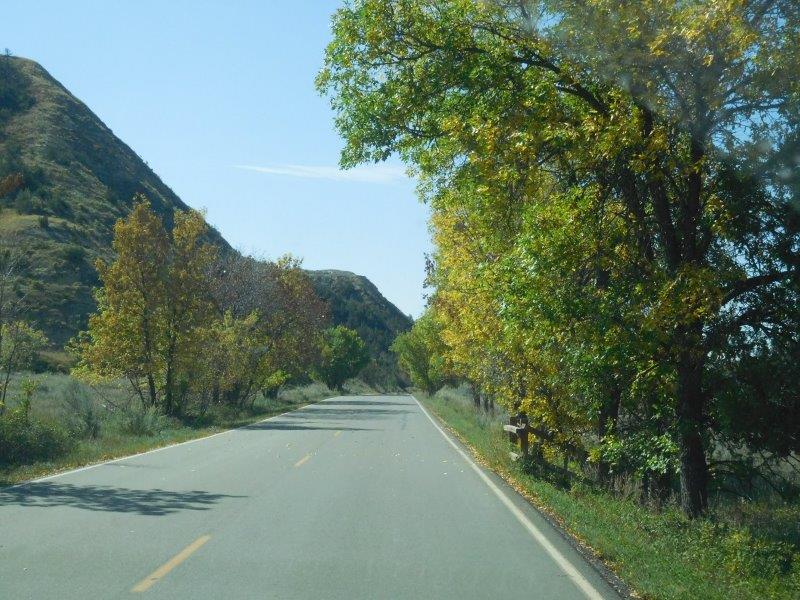
I took this picture just because it was a beautiful fall day and the leaves were turning colors. Stunning.
North Unit
The North Unit of the park requires a 1 hour drive northward from the South Unit. It’s smaller than the South Unit, but has some terrific scenery.
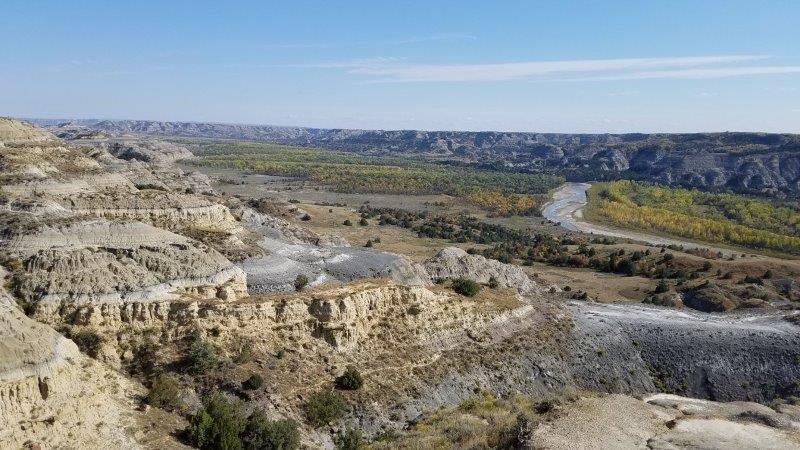
An “ox bend” in the Little Missouri River. The layer of gray in the eroded wall is Bentonite. It is a clay primarily made of volcanic ash. When it is wet, it is VERY slippery.
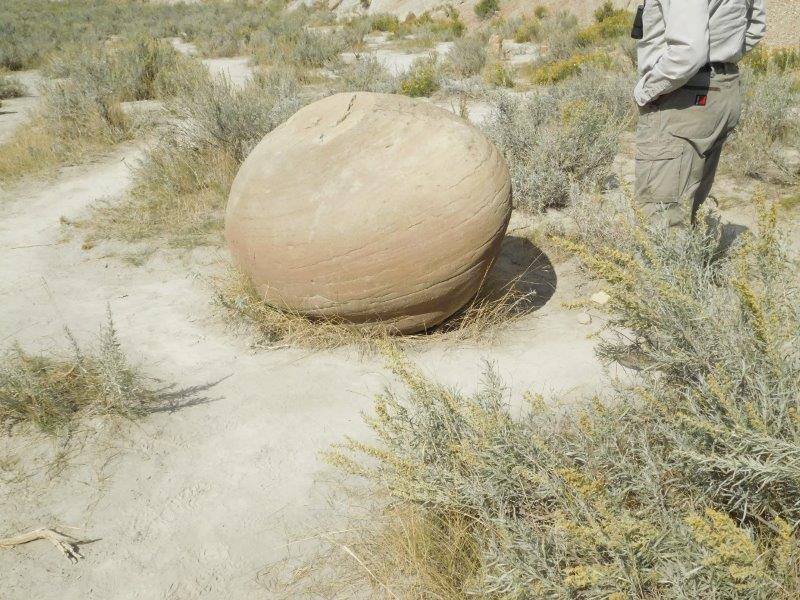
This is a called a cannonball concretion because of its shape. It was formed by wind, water, and time.
Critters
We saw a variety of critters while in Theodore National Park.
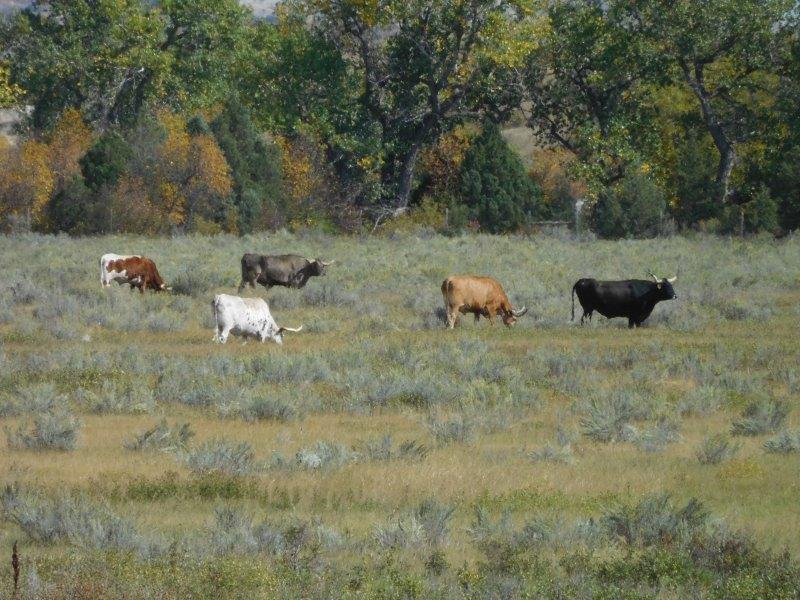
The North Unit has a demonstration herd of longhorn steers. These steers were first brought into the area during the cattle drives in the 1880’s. The Long X Trail that started in Texas went through what is now the North Unit.
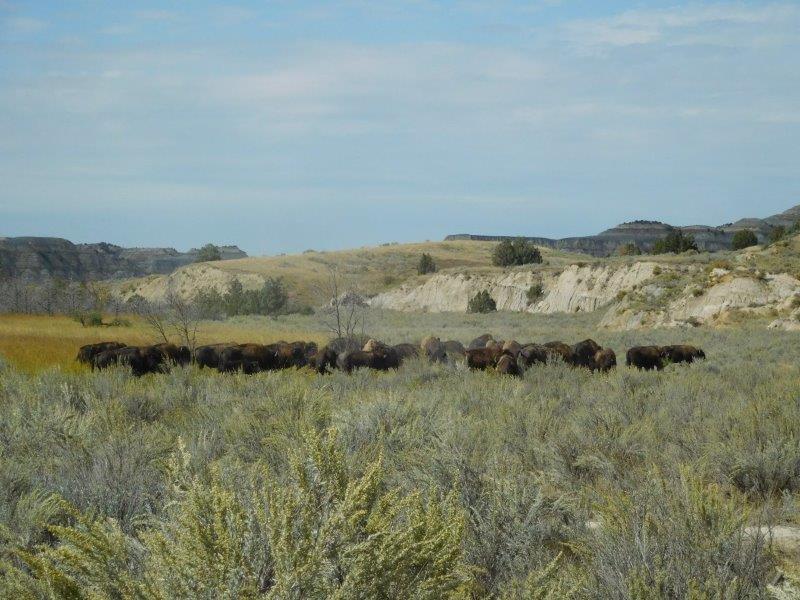
We saw a herd of bison near the pull off for the cannonball concretions. A park ranger had to yell at some idiots that decided to walk closer to the herd. Some people just can’t read the warning signs.
Theodore Roosevelt National Park is not as famous as some of the other National Parks. But it is well worth a visit.
For what it’s worth….If you ever wanted to see a list of National Parks and their visitor statistics, visit https://irma.nps.gov/Stats/. There is more data on the parks there than you can imagine. It makes my geek heart go pitter-pat clicking through the website.
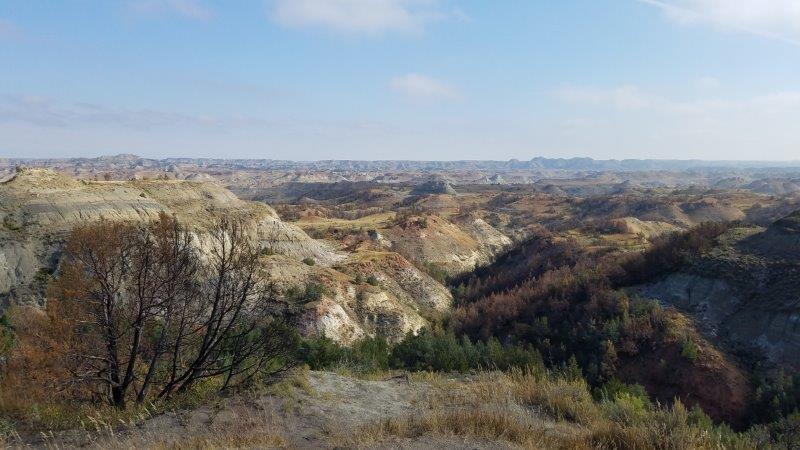
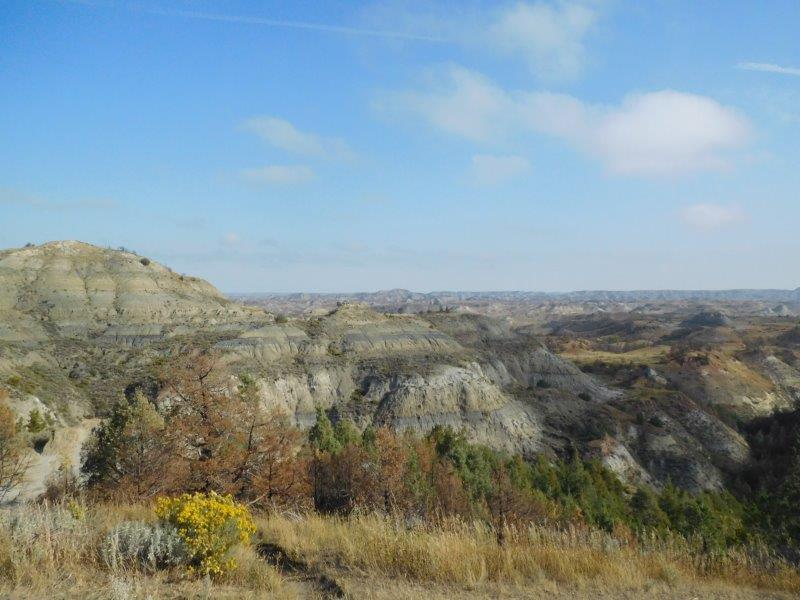
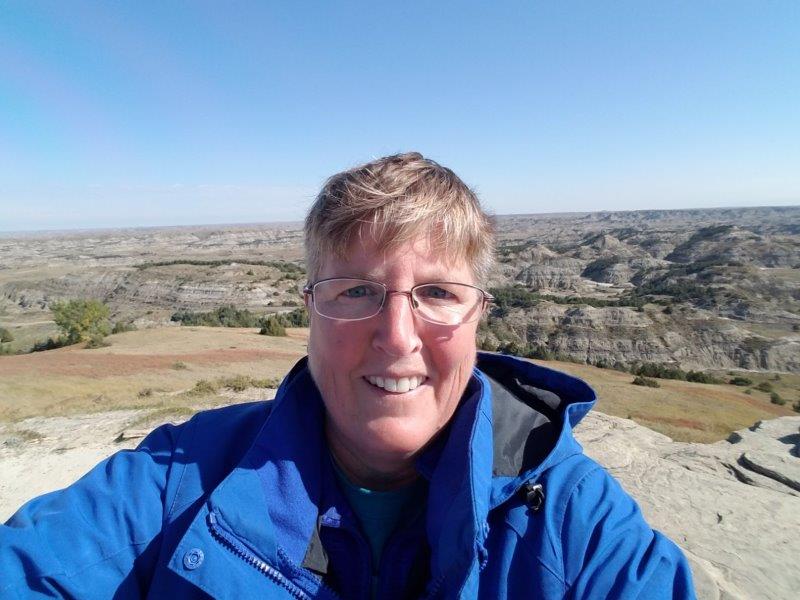
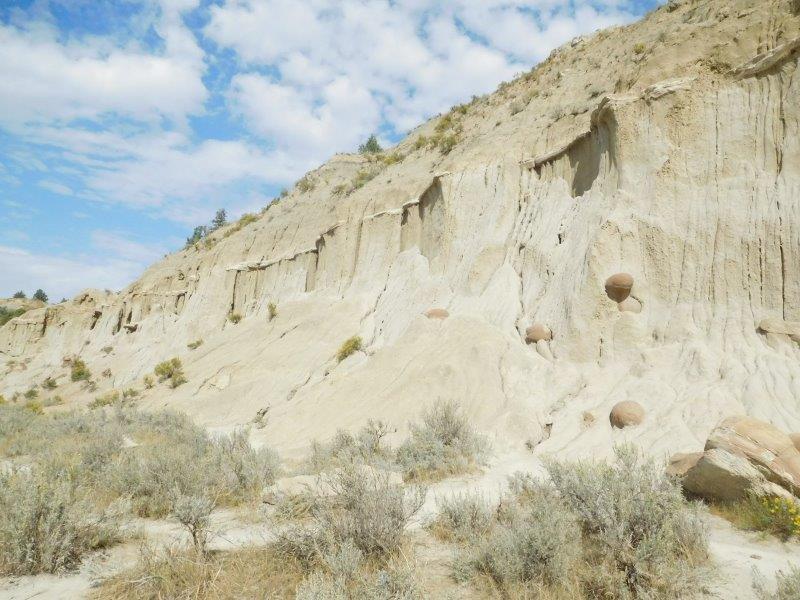
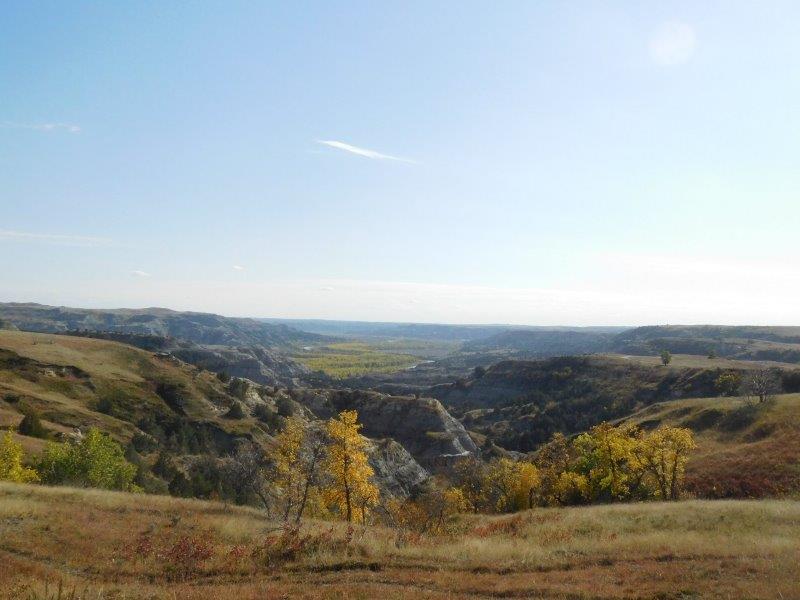
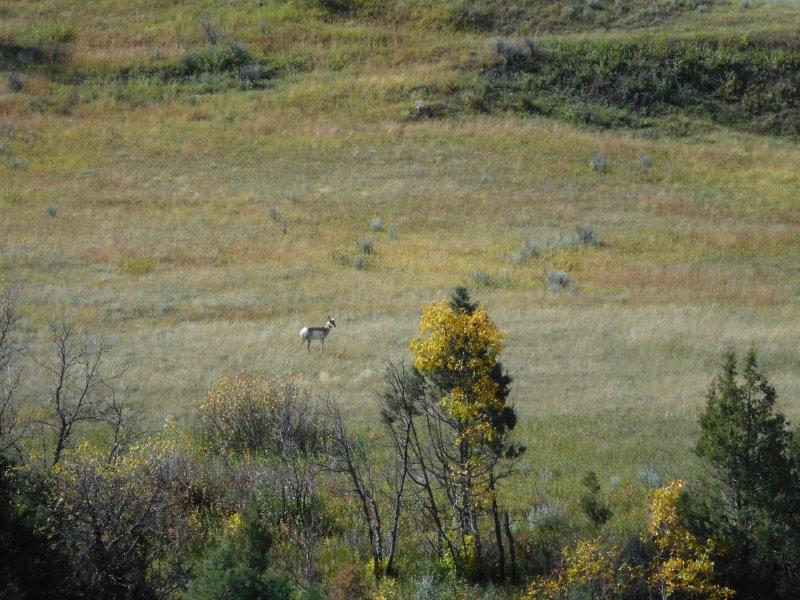
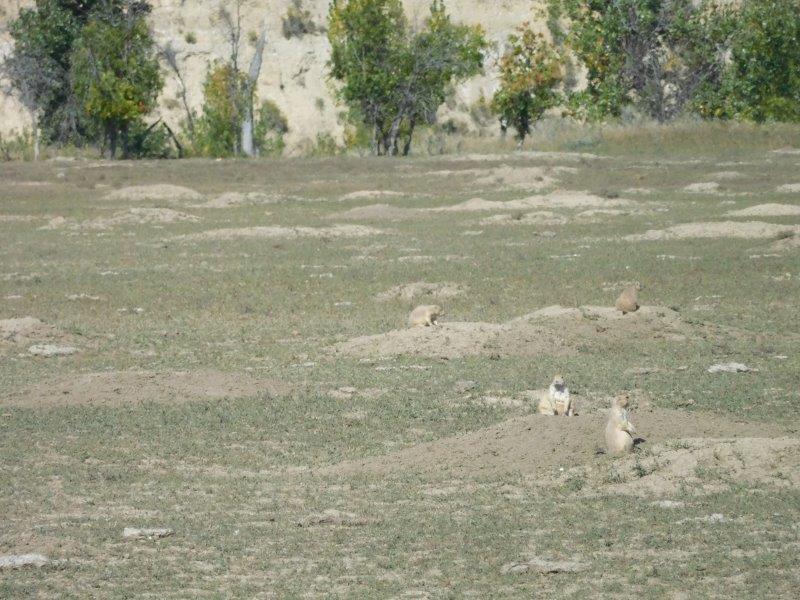
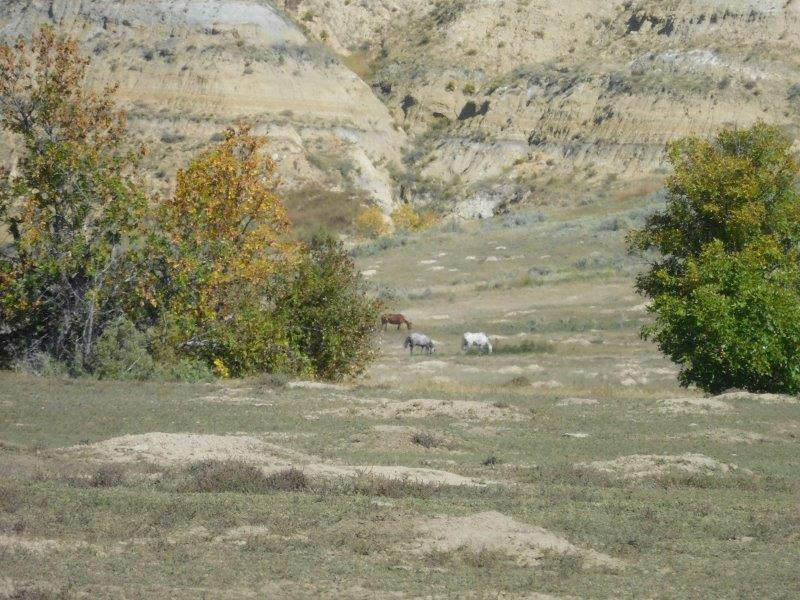
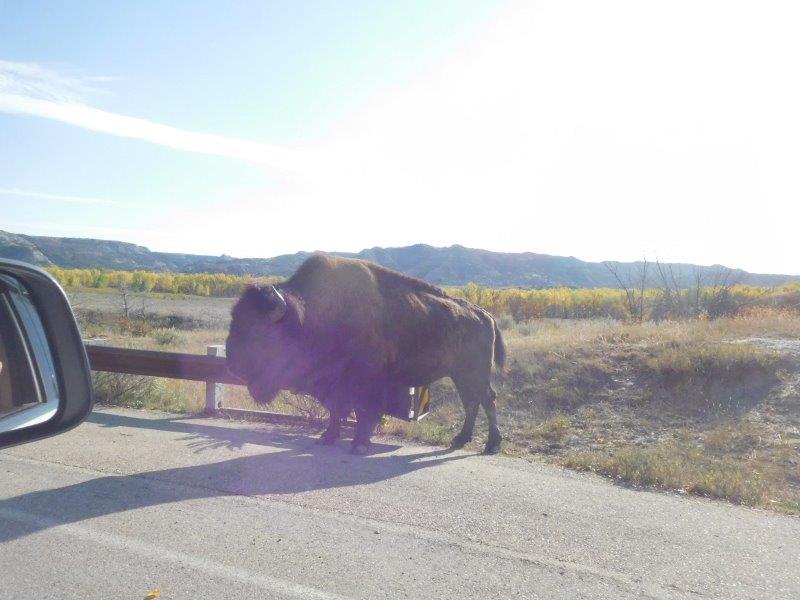
As usual, nice pictures and info.!!! Love those prairie dogs — they’re busy little critters!!! Hope the sugar beet harvest is going well.
Yes, the prairie dogs are busy little critters. As for the beet harvest…today is day 1. So far now phone calls from the husband! That’s a good thing.